Fail, Reflect, Iterate: Rethinking the Design Process

Dan Nessler
Head of UX at Hinderling Volkart and occasional lecturer and writer in the fields of UX and design.
This article was originally published on UX Collective.
Retrospective
When I published my Revamped Double Diamond I didn’t expect anyone to read it, apart from some of my fellow students and my mum. I don’t think she read it though. Anyhow. The response was overwhelming.
My post also provoked debates, criticism, questions and negative feedback. Industry experts – including a creator of the original Double Diamond – expressed their critique:
“You made a simple idea complicated again”“The Double Diamond was pointless in the first place”“There is no real world use for this”
I reflected, responded, processed, iterated and implemented what I have learned.
. . .
What is the Revamped Double Diamond Process?
For those who don’t know: The Revamped Double Diamond is a design process framework based on the Design Council’s Double Diamond. It aims at making sense of the design process and providing guidance and clarity in order to enable people to tackle design challenges. The framework incorporates tools, methods and techniques from various sources to do so.
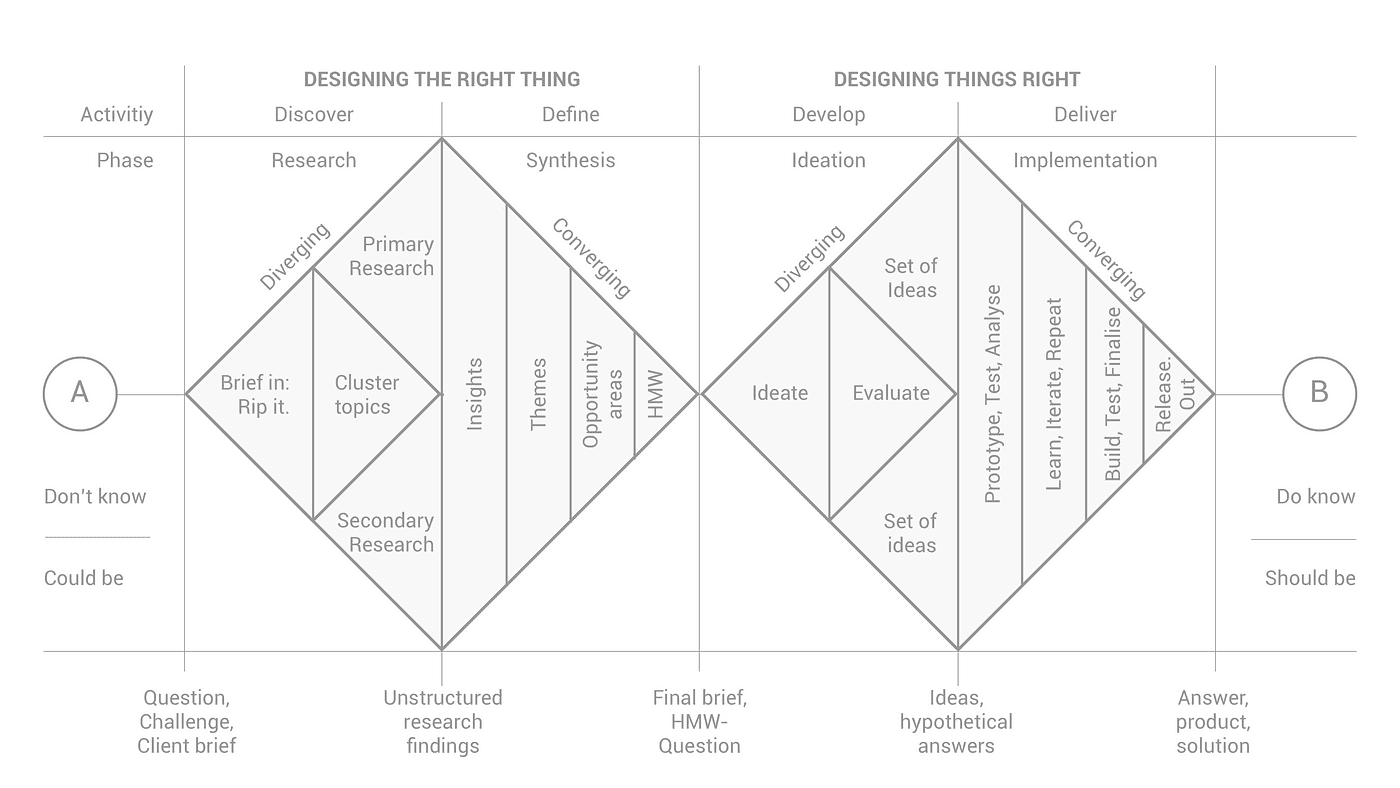
. . .
Methodology
I first came across the Double Diamond about a year ago participating in an IDEO.org HCD challenge. Merlin Zuni (CD, Havas Worldwide) introduced our group to the framework.
To be honest: I didn’t have a clue what he was going on about when doodling the diamond shapes on the flipchart 🤔. Yes, I am a newbie in that sense and IDEO’s HCD approach seemed more tangible. This changed when I started my Experience Design Master’s programme at Hyper Island in Manchester, UK.
Iteration 1
The Double Diamond was introduced and applied early in our programme. For the project visualised in the illustrations below, our team duplicated the Double Diamond to plan and execute a design challenge. We applied the process, various tools, iterated and reflected on them. It left us struggling at some points, uncertain when and where to best put specific tools and steps to practice. I documented step as a flow overlaying the DD phases.
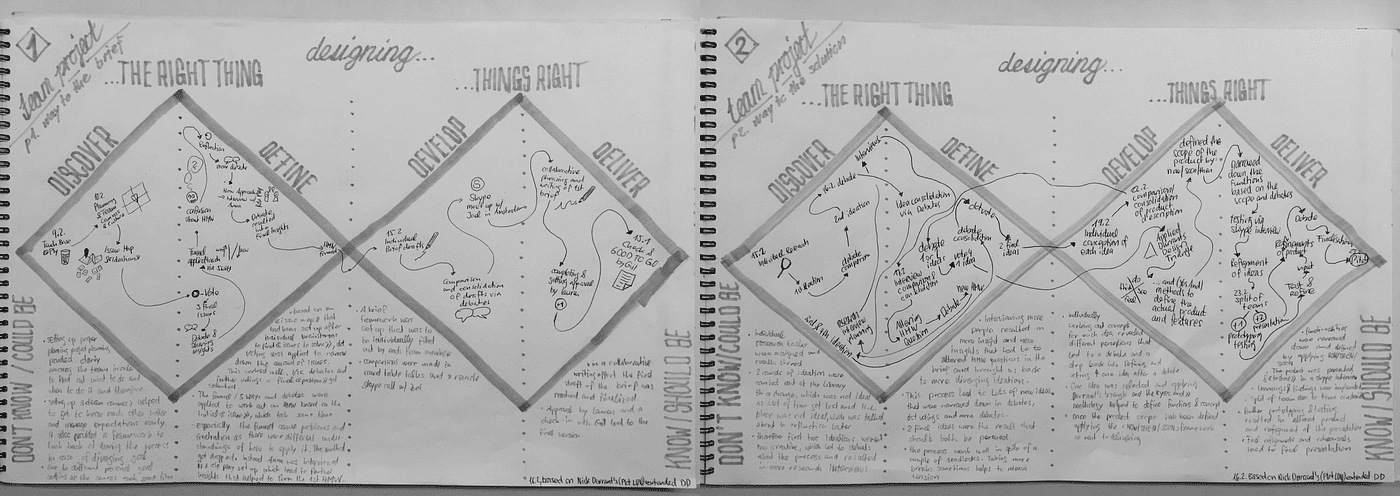
Aa a next step I analysed, iterated and merged the Double Diamond with tools and other processes.
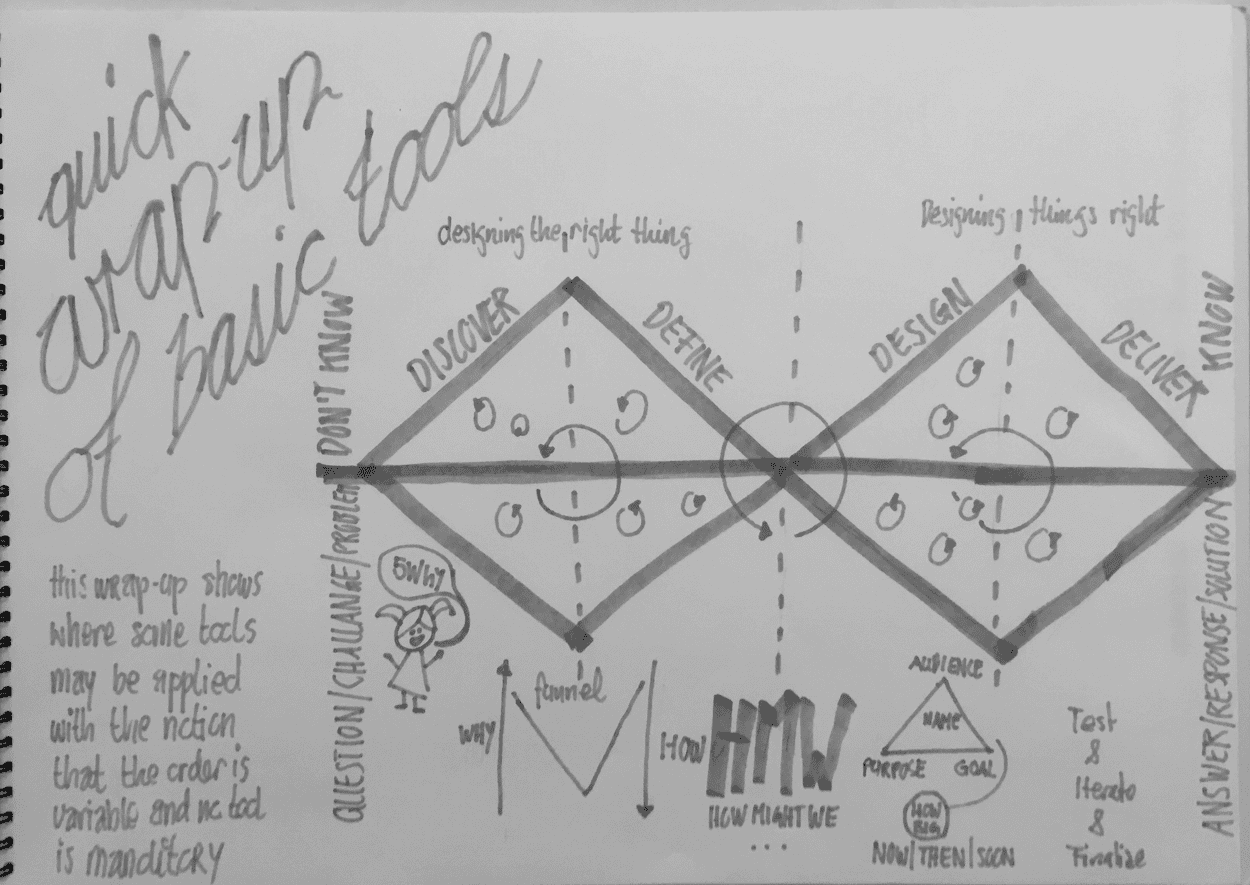
Iteration 2
Sharing and debating my approach with peers and within teams generated more feedback and resulted in a first digital version. It was an attempt at crowdsourcing the idea, provoking a dialogue and generating feedback.
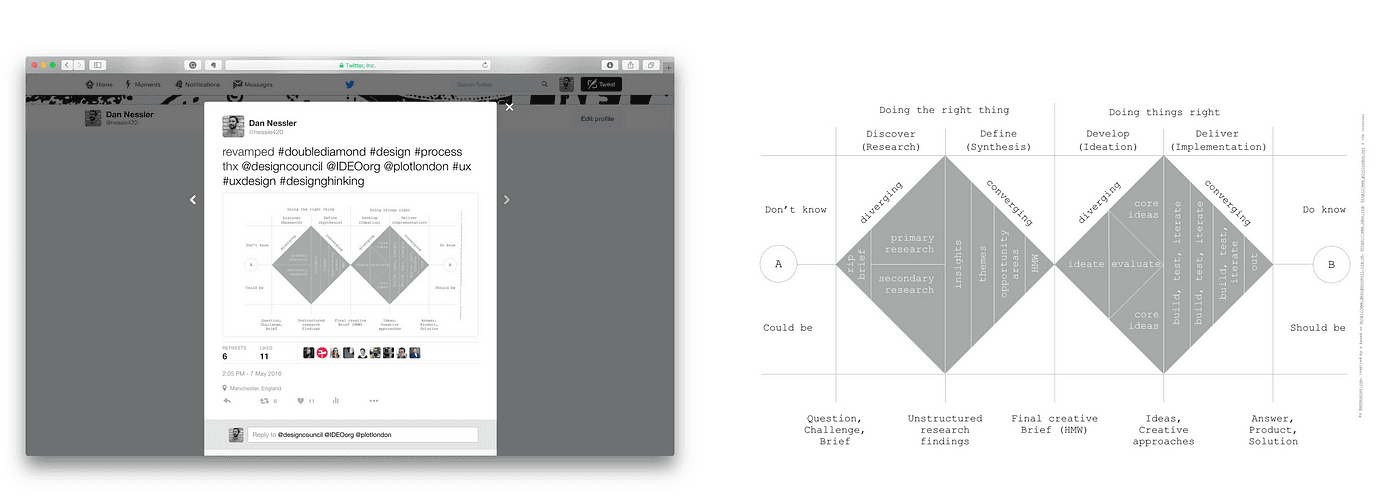
Iteration 3
My tweet and implementing resulting feedback was part of my preparation for a course I taught at the University of the Arts in Bern, Switzerland. There I introduced Design Master’s Students to the creative process.
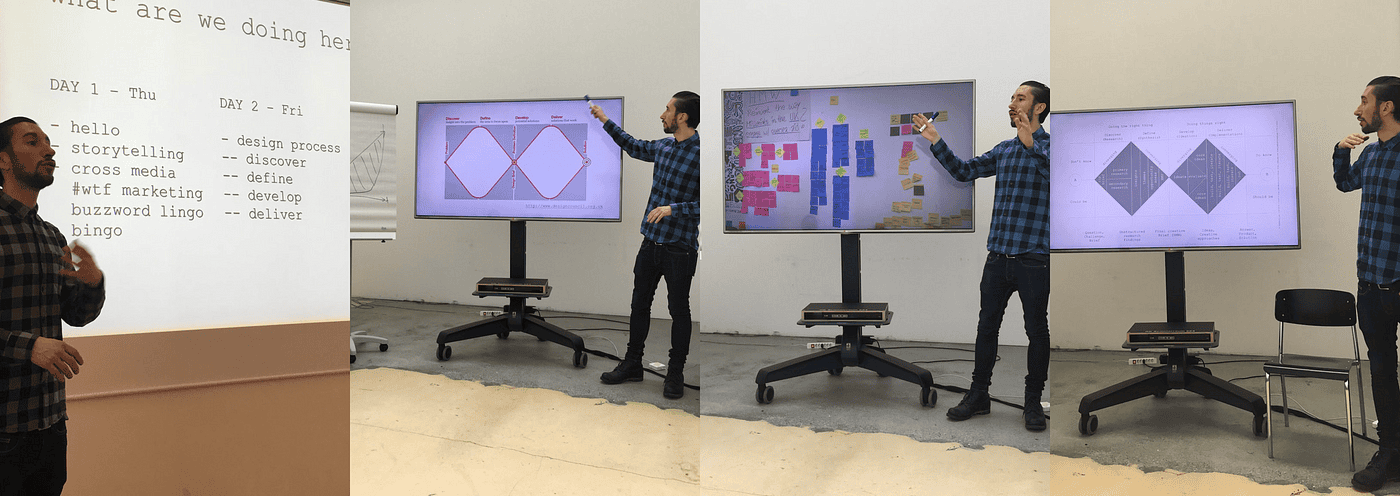
Through teaching, debating and asking for feedback I was able to evaluate the value and challenges when introducing the framework to novice users in an academic context.
Iteration 4
Further applications of the framework during my master’s programme led to the version I published on Medium.
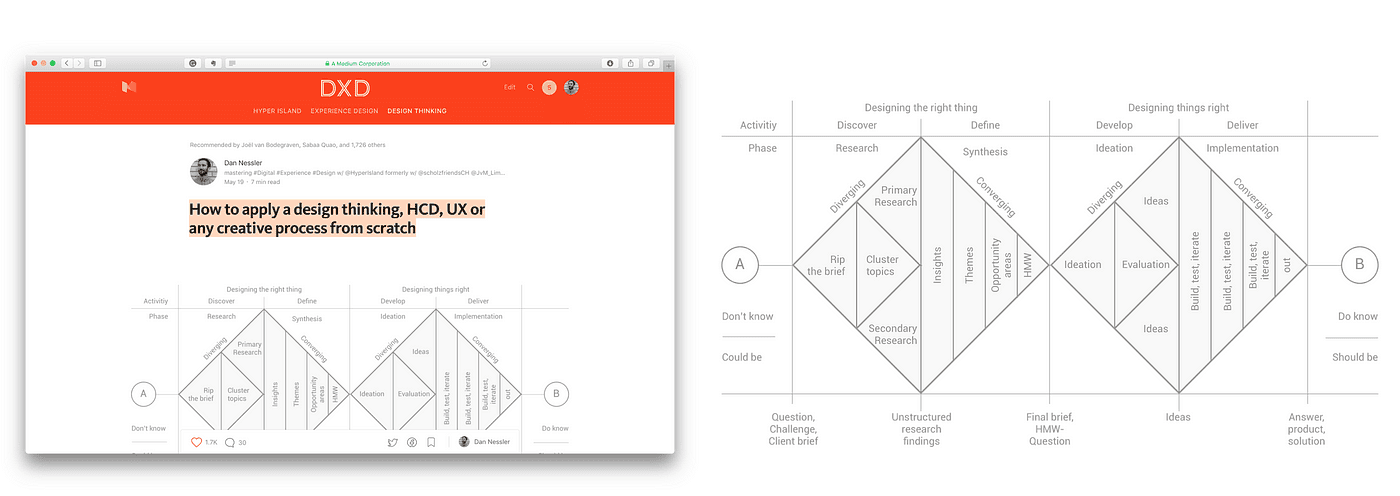
Iteration 5
As mentioned I received a lot of feedback. Based on these iterations, publications, research and feedback, I made the Revamped Double Diamond the topic of an essay (download link at the end of the post).
Iteration 6
This process has led to the article you are reading right now and a once again slightly updated version of the framework.
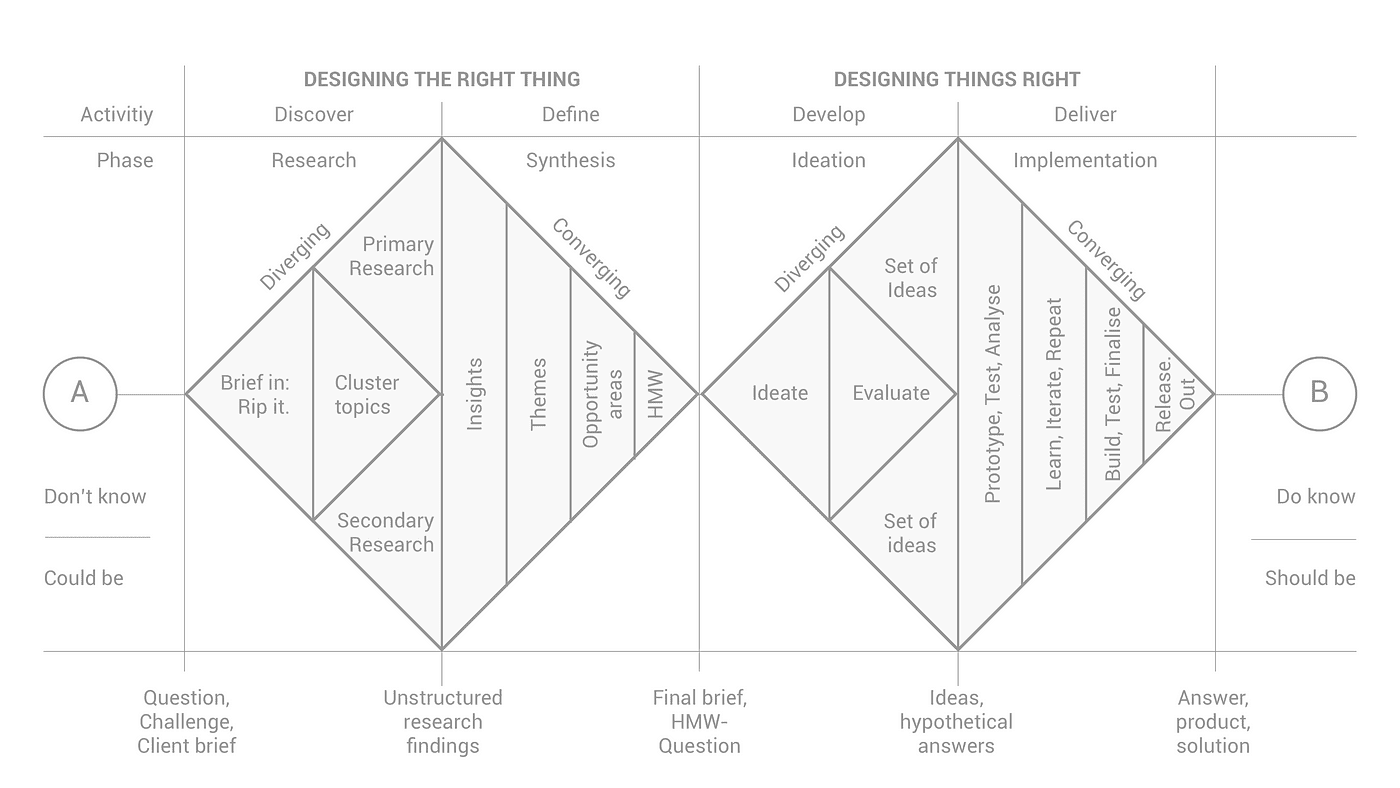
. . .
Criticism and Feedback
At this point, I am going to tackle some of the criticism my framework has provoked.Boon Yew Chew criticises that it has made a simple idea complicated. The original Double Diamond was an abstraction for designers to “go off and figure out what works for themselves” as he states. Similar concerns have been raised by C. Dalmo questioning the level of detail, making it difficult to comprehend the framework for people without a strong Design Thinking background. J. Rock quotes Ludwig Mies van der Rohe arguing that “less is more”.
I agree. Applying the framework as it is requires a general understanding of the design process and tools. Adding to this and referring to Chew it needs to be highlighted that my illustration may not provide a comprehensive foundation of the design process by itself. It is only one and in this case my personal way to make sense of it.
It may be conceived as a multi-layer approach, in which each layer adds or subtracts complexity. Introducing novice users to the process ought to account for this. Unless thoroughly and thoughtfully introduced, the framework can appear intimidating at first as Matt Johnston points out.

VanPatter
criticises the “Double Diamond”, claiming it never made sense in the first place. He argues that the Design Council failed to reflect on basic knowledge known in the Creative Problem Solving Community (CPS) dating back to the work started by Alex Osborn in the 1940s and Sid Parnes in the 1950s. He continues that the CPS community would cycle through 6–8–10 diverging and converging cycles rather than two as found in the Double Diamond.
My Revamped Double Diamond is an amalgamation of existing approaches in order to make sense rather than comparing, judging or rating them over another. Another goal of my approach is to illustrate a potential way the Revamped Double Diamond may be applied in “real world” projects.Johannes Böhm wonders, how the connection to the “real world” would look like in a matrix/waterfall or agile organisation. I will be covering project management and agile methods in relation to my framework in a separate post at a later point.
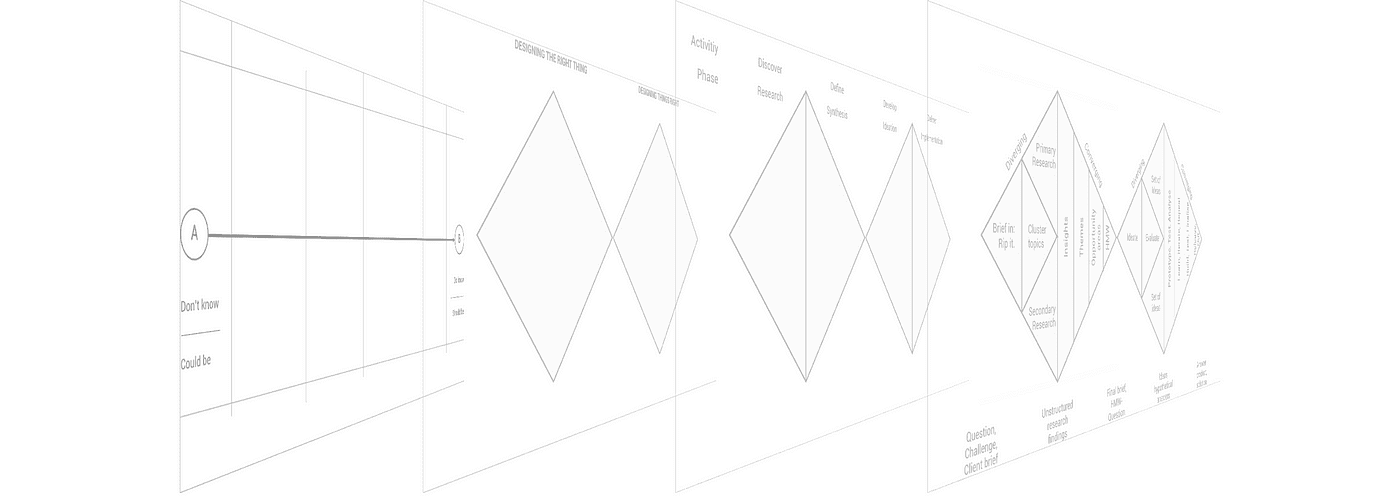
The Revamped Double Diamond should be considered as an overarching framework. Nick Durant states that design frameworks and processes such as the Double Diamond do not only help the design community in their actual process. They also provide a structure upon which designers can communicate with their stakeholders, justify their process and therefore build trust and confidence in their work.
Design frameworks provide a structure to justify the process and build trust and confidence among stakeholders.
My latest version of the Revamped Double Diamond also incorporates a number of changes based on feedback. These changes and further explanations may be found in my essay.
. . .
Conclusion
The Revamped Double Diamond is a personal attempt at making sense of the various design processes, tools and methodologies out there.
Each iteration revealed new insights. Learnings could be made thanks to applying the core principles of a Human / User Centred Design approach and by constantly sharing “the product”, receiving and processing feedback.
My model is far from perfect and it will change again. It is an abstraction of reality that cannot fully account for every single aspect or situation it might be applied in.
Nevertheless, the Revamped Double Diamond provides guidance in the design process. That said and in conclusion:
Whatever you do: Document, share, ask for feedback, iterate and improve.
. . .
- Subscribe to our Magazine Newsletter.
- Follow us on Facebook and LinkedIn.
- Join our community on Slack and Facebook.

Start Prototyping
Get Started with Our Free, Web-Based Platform.
© Phase Software GmbH 2025